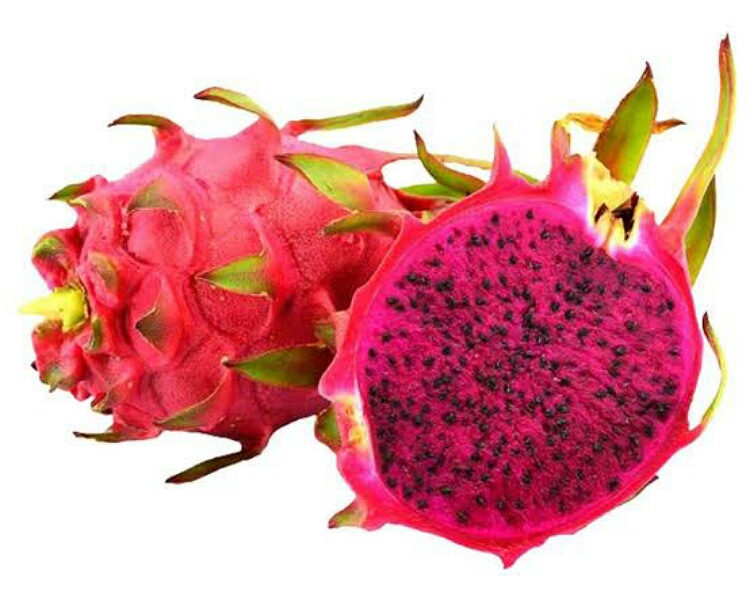Dragon fruit is a unique and delicious tropical fruit. It tastes different but has a lot of health benefits too. What are the health benefits associated with this colorful fruit? Are there any risks with its ingestion?
Dragon fruit
Dragon fruit is a tropical fruit found mostly in South East Asia. And it is native to Central America and Southern Mexico. But in this modern age, trees bearing it are cultivated everywhere in the world. The tree is Hylocereus cactus or Honolulu queen and its flowers bloom only at night.

The outside of the fruit is red with green scales. And the inside pulp is red or white with black seeds. Its appearance is exotic and it tastes like kiwi and pear combined. People like the looks and taste of this fruit but it is nutritious as well.
Nutritional value
Like all fruits, this fruit is also rich in dietary fiber, minerals, vitamins and antioxidants. The fruit contains natural sugars in the form of sucrose. Sucrose is a disaccharide that is made of one molecule of glucose and one molecule of fructose. Additionally, it has high levels of magnesium and iron. Each 100 grams of the fruit or 3.5 ounces of this fruit has 60 calories. Fat is nil while protein content is 1.2 grams. The total carbs in 100 grams is 13 grams. And it has 3 grams of fiber in it.

It is rich in vitamin C, iron and magnesium. It has small amounts of other vital minerals and vitamins too. The pulp of the fruit is rich in phytochemicals which act as antioxidants and prevent cellular damage from the free radicals in the body. These unstable molecules are associated with ageing and chronic health conditions of the body.
The most common antioxidants in it are betalains, hydroxycinnamates, and flavonoids. Betalains are rich in red pulped dragon fruits. The hydroxycinnamates protect against cancer. And flavonoids promote heart and brain health.
Health benefits
Animal studies have revealed the benefits of dragon fruits for health. The beneficial components are mainly fiber and antioxidants. Both the white pulped and red pulped dragon fruits reduce the incidence of insulin resistance and fatty liver formation in obese mice.
Mice study has also shown that it minimizes inflammation and decreases weight gain. This is partly due to improvement in gut health due to its prebiotic fiber. Animal studies have also proven its blood sugar lowering effects. But there were some slight increases in liver enzymes too. The results of studies on dragon fruits are variable and therefore more large scale studies are needed to give a clearer insight into its benefits for humans.

These fruits are generally safe. But rare instances of allergy to one or more of its components have been reported. Two women had anaphylaxis after having this fruit. Both had antibodies against the fruit in their blood.
Read here: Colombia, South America: 8 exotic, refreshing, and nutritious fruits
You can eat this fruit raw by scooping out its pulp. Or you can add the slices or cut pieces to salads, smoothies or you can juice it. You can also add it to Greek yoghurt and top them with nuts for a healthy breakfast.
